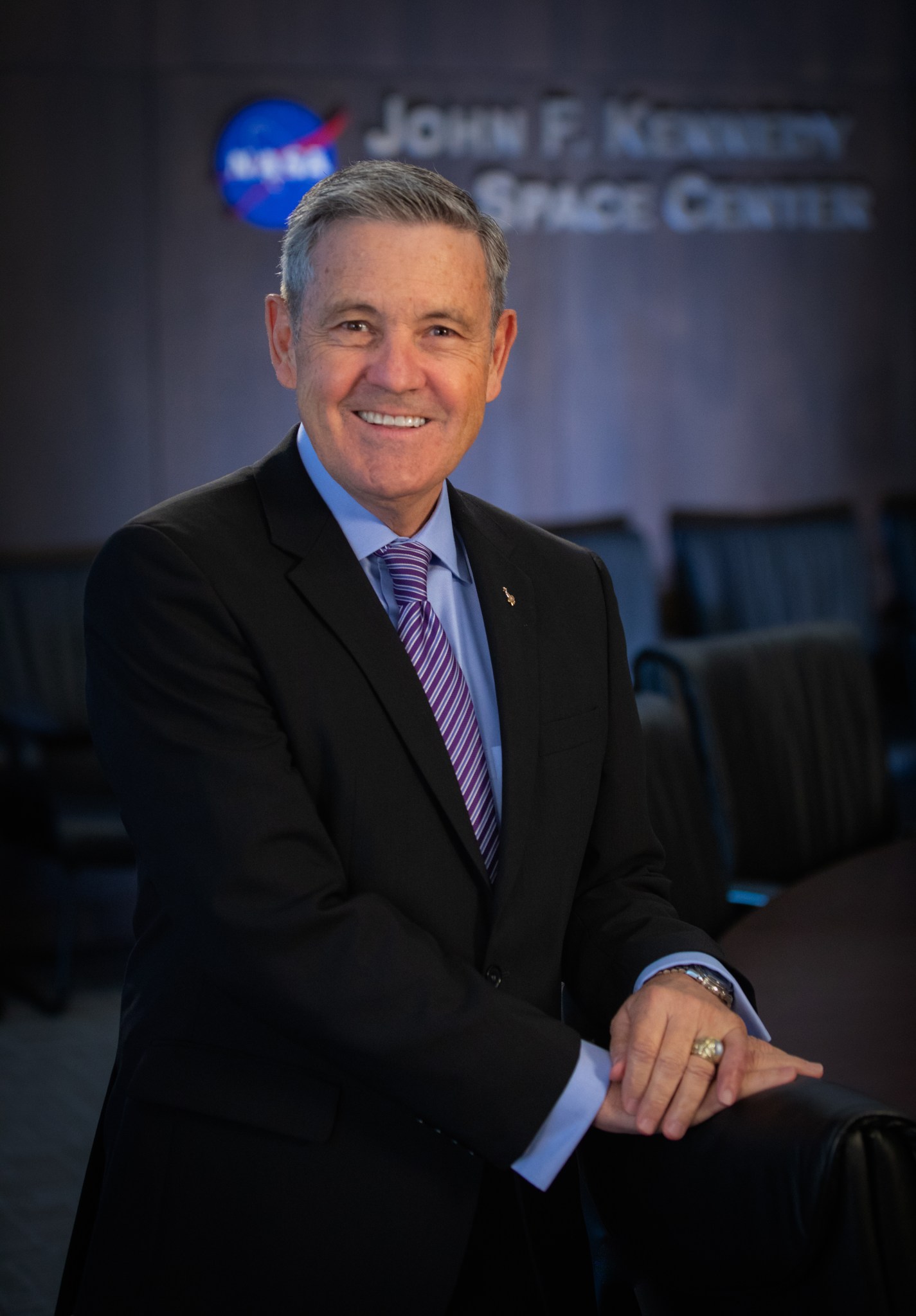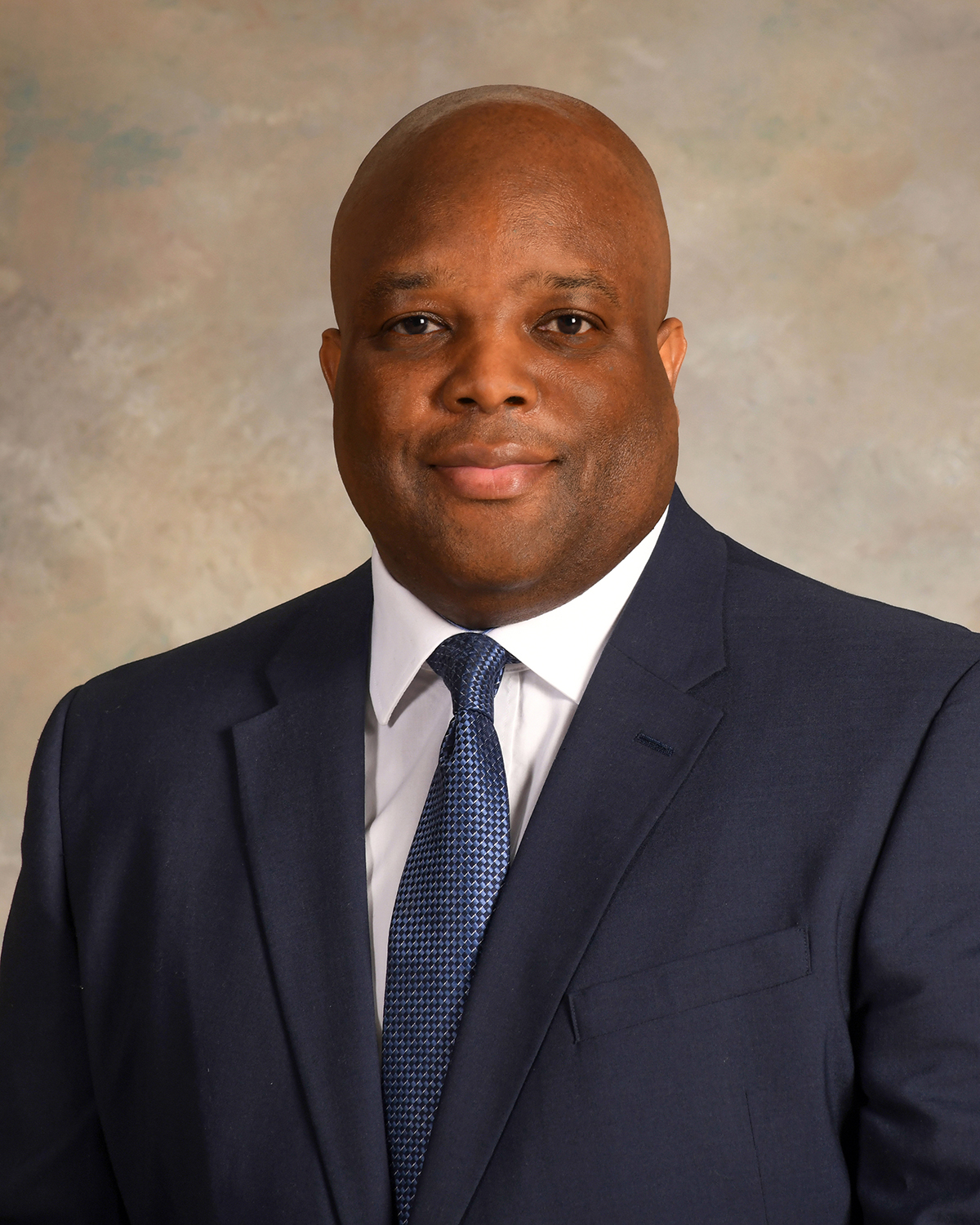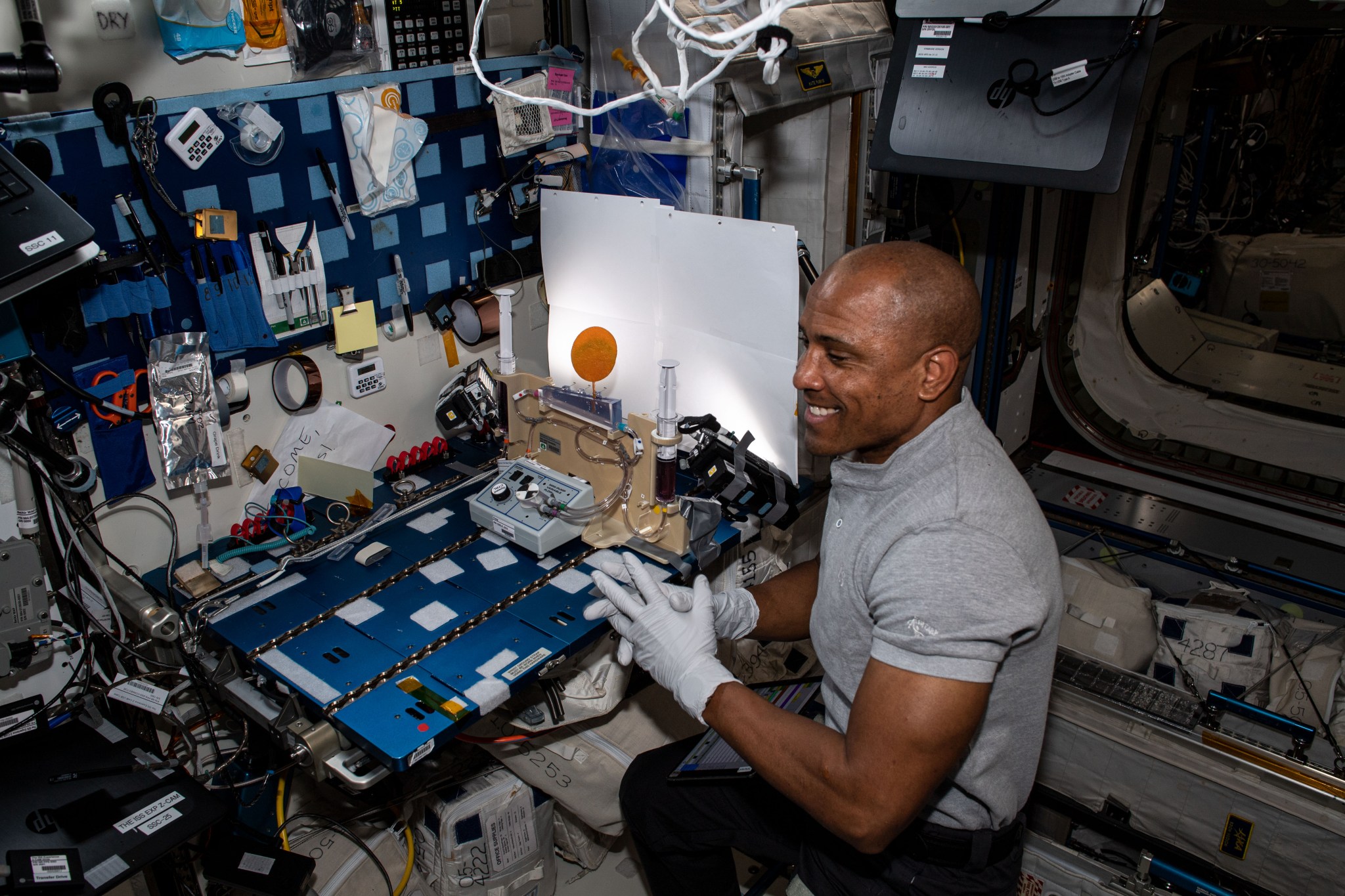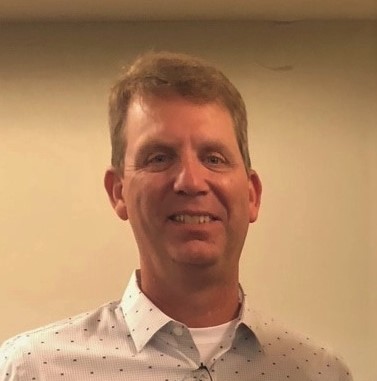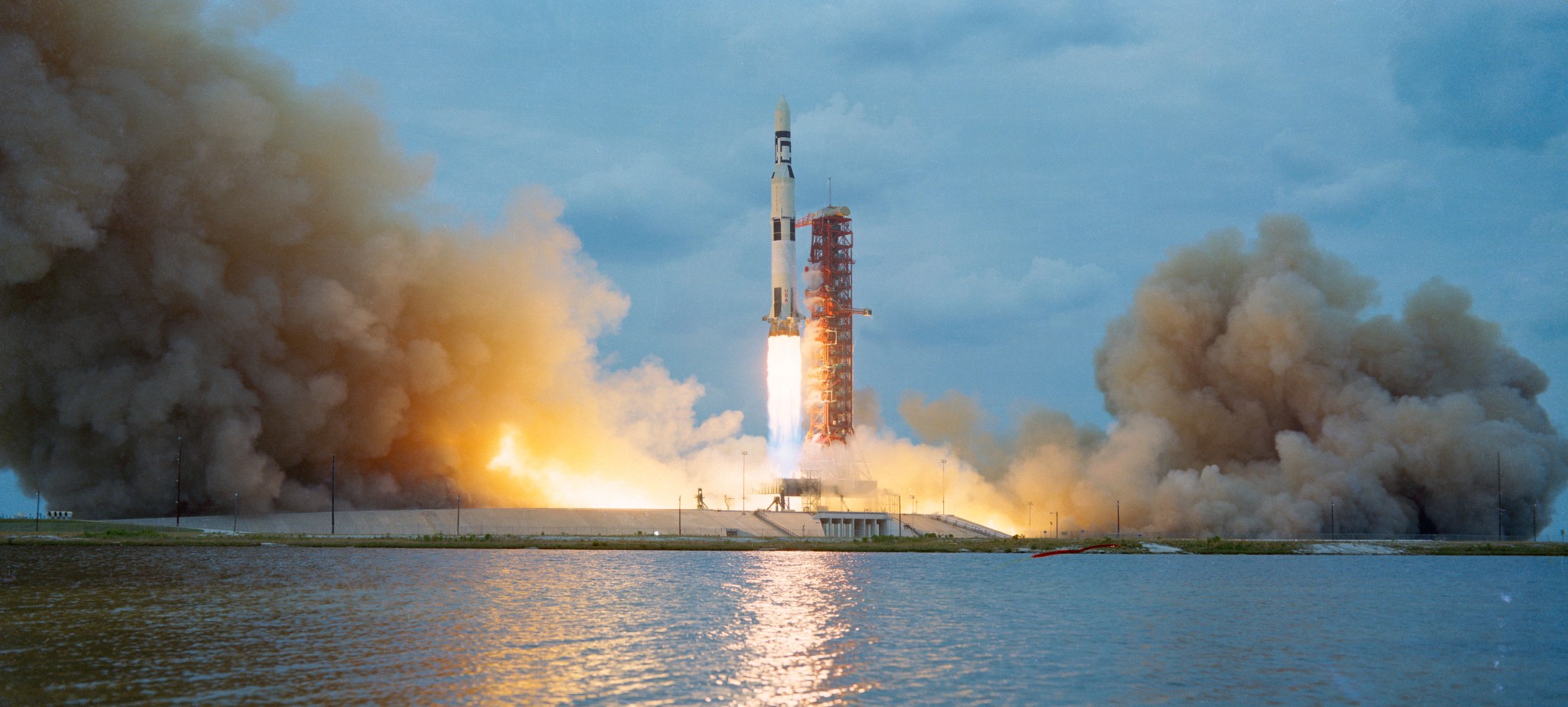Bob Cabana Named NASA Associate Administrator
Bob Cabana, who has been director of NASA’s Kennedy Space Center since 2008, will take on the new role of agency associate administrator beginning May 17. He succeeds Steve Jurczyk, who will retire May 14 after 32 years with NASA
“I first met Bob in 1985 while training to fly on the space shuttle and when Bob arrived at NASA as an astronaut candidate,” NASA Administrator Sen. Bill Nelson said. “He has a relentless determination to expand America’s role in space.”
As Kennedy director, Cabana managed all NASA programs and activities at the spaceport. Kennedy’s team of civil service and contractor employees operate some of NASA’s most critical programs, including the Commercial Crew Program. Under Cabana’s leadership, Kennedy emerged as a modern, world-class multiuser spaceport, partnering with commercial customers and supporting NASA’s science and human exploration missions.
A veteran of four space shuttle missions, Cabana logged 38 days in space, serving as the pilot on STS-41 and STS-53 and mission commander on STS-65 and STS-88. His fourth flight was the first assembly mission of the International Space Station in December 1998. He went on to become deputy director at NASA’s Johnson Space Center and director of NASA’s Stennis Space Center before being reassigned to Kennedy.
Cabana graduated from the U.S. Naval Academy in 1971 with a degree in mathematics. He was commissioned in the U.S. Marine Corps and completed Naval Flight Officer training in Pensacola, Florida, in 1972. He was designated a naval aviator in September 1976 and went on to log over 7,000 hours of flight time in more than 50 aircraft types.
“Bob is the real deal,” Nelson said. “He has the vision and management skills to bring NASA to even higher heights, and I’m excited to see all he will accomplish as associate administrator.”
Jurczyk had been associate administrator since May 2018, and was acting administrator from Jan. 20 to May 3 of this year. He oversaw the landing of the Perseverance rover on Mars, a successful Green Run test of the core stage of the Space Launch System rocket, the naming of the Mary W. Jackson NASA Headquarters building, the launch of NASA’s SpaceX Crew-2 to the International Space Station, and the return of Crew-1 back to Earth.
Before being named associate administrator, Jurczyk’s roles included associate administrator of the Space Technology Mission Directorate and director and deputy director of NASA’s Langley Research Center.
““It has been an honor to lead NASA and see the agency’s incredible growth and transformation throughout my time here,” Jurczyk said. “The NASA workforce is what makes this agency so special, and I’m incredibly grateful for their amazing work, especially throughout the coronavirus pandemic. At NASA, we turn dreams into reality, and make the seemingly impossible possible. I am so fortunate to have been a member of the NASA family.”
Cabana joins a senior NASA Headquarters team that includes: Pam Melroy, nominee for deputy administrator; Margaret Vo Schaus, nominee for chief financial officer; Bhavya Lal, senior advisor for budget and finance; Marc Etkind, associate administrator for communications; Alicia Brown, associate administrator for legislative and interagency affairs; and Susie Perez Quinn, chief of staff.
Janet Petro, who has been deputy director at Kennedy since 2007, will be the center’s acting director.
Hansel Gill Named Michoud Deputy Director
Hansel Gill has been named deputy director of NASA’s Michoud Assembly Facility.
He will assist the Michoud director in overseeing one of the world’s largest manufacturing facilities, which provides the crucial infrastructure where elements of NASA’s Space Launch System and Orion spacecraft are assembled. Michoud also provides facilities for non-NASA governmental and commercial technology-based industry tenant operations.
From 2016 to his new appointment, Gill was subsystem manager for production of the SLS Block 1B Exploration Upper Stage in the Block 1B Development Office and the Stages Element Office, providing technical leadership for SLS core stage and exploration upper stage planning and production operations. From 2015-2016, he was technical assistant to the Office of the Director at NASA’s Marshall Space Flight Center.
In 2013, Gill was team lead and acting assistant branch chief for the Metals Joining and Processes Branch in the Metals Engineering Division. He was responsible for materials process development and characterization, product management, and corrosion engineering supporting the advanced exploration and manufacturing needs aligned with agency strategic vectors. Gill also led production for the EFT-1 multipurpose crew vehicle stage adaptor, providing the structural interface for Orion and the Delta IV launch system supporting the EFT-1 Orion Flight Test.
Gill received various awards during his time at Marshall, including the NASA Honor Award Exceptional Achievement Medal, Director’s Commendation Honor Award, Safety Flight Awareness Awards, and the 24th STEM Global Competitiveness Conference Black Engineer of the Year Award – Modern Day Technology Leader distinction.
Gill earned his bachelor’s degree in mathematics from Oakwood University in Huntsville in 1996 and his master’s degree in industrial and systems engineering from the University of Alabama in Huntsville in 2007. He resides in Huntsville with his wife, Arnissa, and daughter, Addison.
Marshall Team on Earth Enables Science Success in Orbit
By Will Bryan
Inside the International Space Station is a buzz of activity as explorers, pilots, doctors, and scientists from around the world conduct experiments, maintain the facility, and develop new technologies.
Recently, a group of seven astronauts and cosmonauts completed the largest long-duration crew mission in the orbiting outpost’s history, and NASA astronaut Kate Rubins and the astronauts who arrived on the SpaceX Crew-1 mission advanced science and technology and performed a record amount of experiments along the journey.
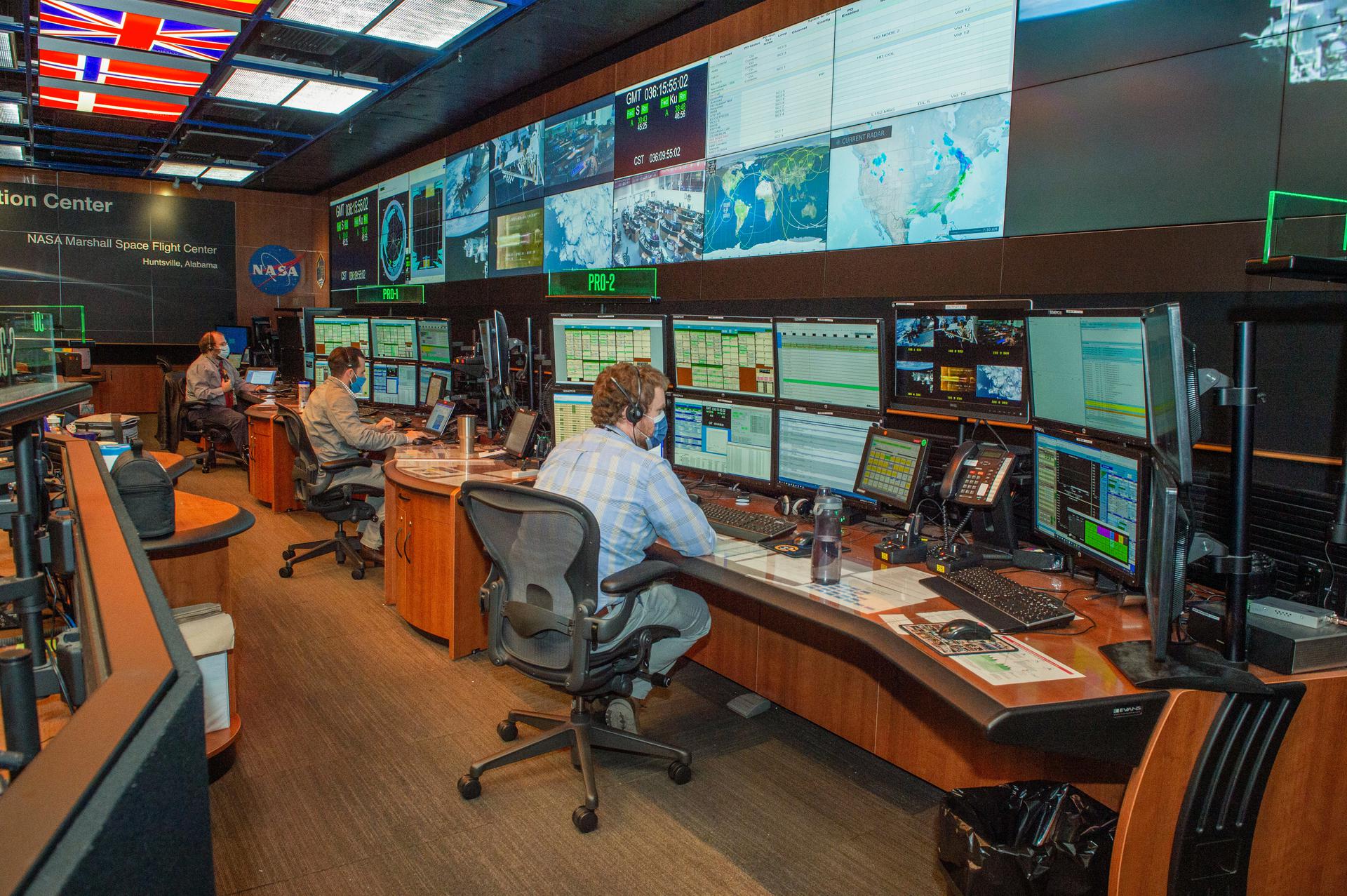
Teams on Earth, including at the Payload Operations Integration Center at NASA’s Marshall Space Flight Center, helped the crew complete scientific discoveries at an increased pace.
Specifically, the integration center serves as science mission control for the experiments performed in the U.S. Operating Segment. Currently, five astronauts aboard perform the tasks associated with the experiments. The team works with space station partners around NASA, other space agencies, and with scientists around the world to schedule the experiments and help guide the orbiting astronauts through the investigations – including a study of how space affects arteries, testing materials to see if they can stand up to the rigors of space, and comparing coatings that may limit microbial growth.
When Crew-1 arrived November 16, 2020 – joining Rubins and Russian cosmonauts Sergey Ryzhikov and Sergey Kud-Sverchkov, who docked October 16, 2020 – the crew size and science capability reached record levels.
“We started putting processes in place many years back to get ready for the Commercial Crew Program and the additional crew members,” said Chris Wakefield, one of the payload operations managers for the Expedition 64 mission. “We’ve got a lot of science accomplished.”
Scheduling experiments for five astronauts is not as simple as looking at a spreadsheet and picking a time, though. Much like a lab on Earth, the work stations – spots in the space station where experiments are run – have different tools, features, and power supply capabilities that are often needed for multiple investigations.
Additionally, the astronauts must attend to other space station duties, such as exercise, cleaning and maintenance, and spacewalks. Other times, the constraints are simply based around where each astronaut needs to work; ensuring that the experiments can get done without the astronauts being in each other’s way.
While the work for each member of the team has gotten busier and more complicated with the increased crew size, for Payload Communications Manager Shelby Bates, the larger crew means another crew member to interact with and more experiments to help the astronauts perform.
“This crew is definitely passionate, and they want to see science get done,” Bates said. “We’re pumping through science so quickly. They’re cruising through it, which is great because the more science, the better.”
Undoubtedly when working on experiments in space, questions, challenges, and oddities arise, and the payload communications manager team is a key part to the solutions.
“Science is science, and it never goes perfectly to plan,” Bates said. “Recently, we had a situation where something was not working. We couldn’t get it. We were trying everything, and the last thing we tried, worked. We had two crew members aboard who were so excited to tell the payload developer they got it working.”
While the astronauts are 250 miles above Earth, and some scientists are halfway around the world, other distances that had to be overcome are much closer to home.
“All of the teams are still working under the COVID-19 environment. Folks are not working under normal conditions,” Wakefield said. “We’ve been able to continue our operations and do them successfully while folks are working in this kind of environment.”
The successes Wakefield, Bates, and the team experience go well beyond personal gains.
“Being part of the team that helps the scientists – for some of them, their experiment has been their life’s work – and helping to make sure the experiments get accomplished is very rewarding,” Wakefield said.
Wakefield, Bates, and the entire integration center team are sustaining the same pace and momentum of the Expedition 64 mission during the Expedition 65 six-month science mission with NASA astronaut Mark Vande Hei and the Crew-2 astronauts who launched to the space station April 23 and docked April 24. Team members are constantly learning from each mission and experiment and are refining processes to gain efficiencies and make improvements for each mission – as they have done for the past 20 years.
During the past two decades of work, team members supported and guided hundreds of astronauts and thousands of experiments and technology development activities on the orbiting outpost, which continue to push the boundaries of human space exploration and improve life on Earth.
As the saying goes, the best is yet to come.
Bryan, a Manufacturing Technical Solutions employee, supports Marshall’s Office of Strategic Analysis & Communications
OSIRIS-REx Spacecraft Heads for Earth with Asteroid Sample
After nearly five years in space, NASA’s Origins, Spectral Interpretation, Resource Identification, Security, Regolith Explorer – OSIRIS-REx – spacecraft is on its way back to Earth with an abundance of rocks and dust from the near-Earth asteroid Bennu.
On May 10 at 3:23 p.m. CDT, the spacecraft fired its main engines full throttle for seven minutes – its most significant maneuver since it arrived at Bennu in 2018. This burn thrust the spacecraft away from the asteroid at 600 miles per hour, setting it on a 2 ½-year cruise toward Earth.
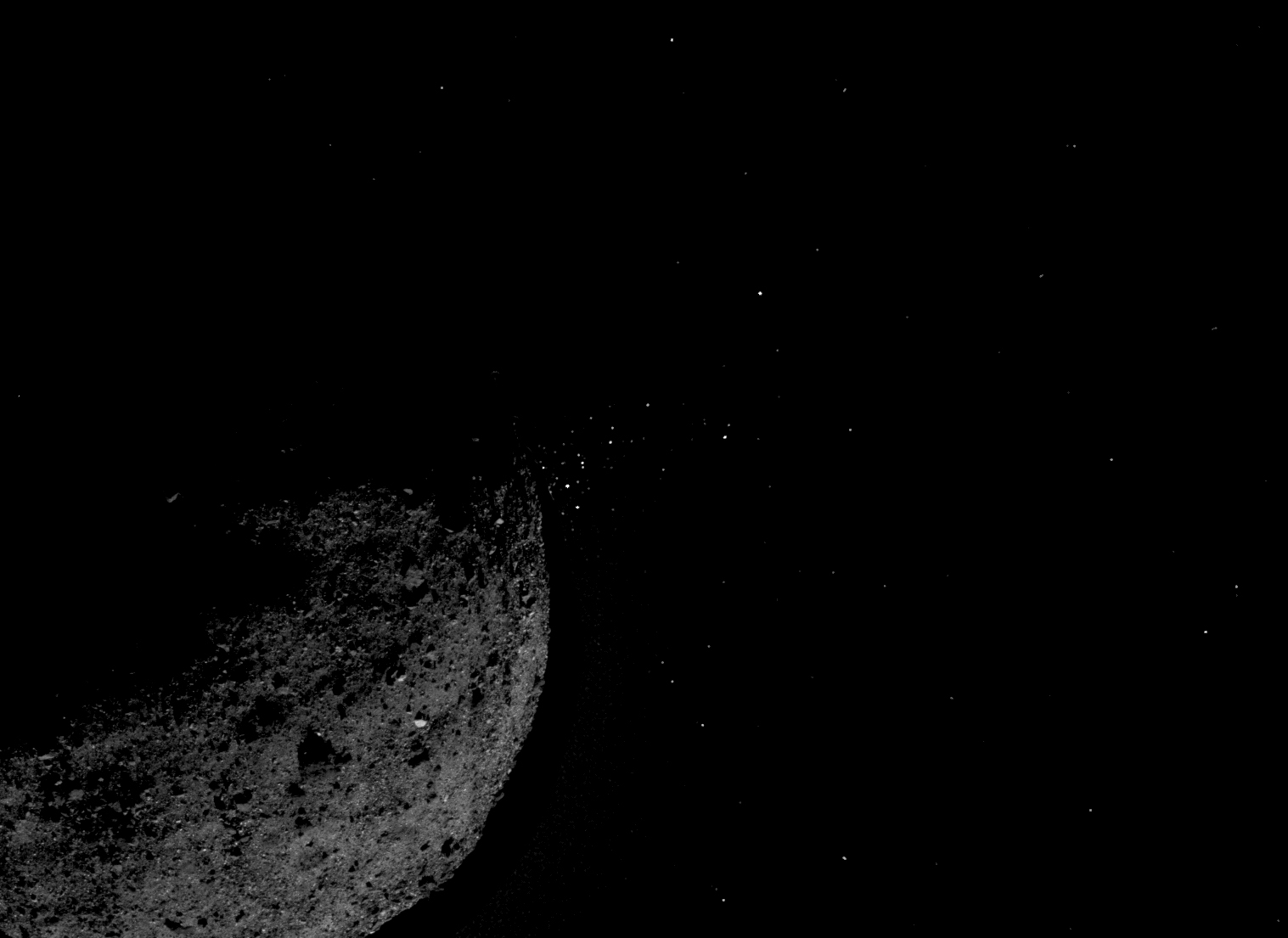
“It was very exciting to see such a perfect execution of the final spacecraft operations at Bennu,” said Solveig Irvine, OSIRIS-REx mission manager at NASA’s Marshall Space Flight Center. “While it is the end of our time with the asteroid, it is also the beginning of the final journey that will allow us to unlock many of the questions we have held throughout this amazing adventure.”
ORISIS-REx will continue to head toward Earth and will fire its engines to fly by Earth safely, putting it on a trajectory to circle the sun inside of Venus’ orbit. After orbiting the Sun twice, OSIRIS-REx is due to reach Earth on Sept. 24, 2023. Upon return, the capsule containing pieces of Bennu will separate from the rest of the spacecraft and enter the atmosphere. After releasing the sample capsule, OSIRIS-REx will have completed its primary mission. The capsule will parachute to the Utah Test and Training Range in Utah’s west desert, where scientists will be waiting to retrieve it.
“OSIRIS-REx’s many accomplishments demonstrated the daring and innovate way in which exploration unfolds in real time,” said Thomas Zurbuchen, associate administrator for science at NASA Headquarters. “The team rose to the challenge, and now we have a primordial piece of our solar system headed back to Earth where many generations of researchers can unlock its secrets.”
To realize the mission’s multiyear plan, a dozen navigation engineers made calculations and wrote computer code to instruct the spacecraft when and how to push itself away from Bennu. After departing from Bennu, getting the sample to Earth safely is the team’s next critical goal. This includes planning future maneuvers to keep the spacecraft on course throughout its journey.
“Our whole mindset has been, ‘Where are we in space relative to Bennu?’” said Mike Moreau, OSIRIS-REx deputy project manager at NASA’s Goddard Space Flight Center. “Now our mindset has shifted to ‘Where is the spacecraft in relation to Earth?’”
The navigation cameras that helped orient the spacecraft in relation to Bennu were turned off April 9, after snapping their last images of the asteroid. With Bennu in the rearview mirror, engineers are using NASA’s Deep Space Network of global spacecraft communications facilities to steer OSIRIS-REx by sending it radio signals. By measuring the frequency of the waves returned from the spacecraft transponder, engineers can tell how fast OSIRIS-REx is moving. Engineers measure how long it takes for radio signals to get from the spacecraft back to Earth in order to determine its location.
The May 10 departure date was precisely timed based on the alignment of Bennu with Earth. The goal of the return maneuver is to get the spacecraft within about 6,000 miles of Earth in September 2023. Although OSIRIS-REx still has plenty of fuel remaining, the team is trying to preserve as much as possible for a potential extended mission to another asteroid after returning the sample capsule to Earth. The team will investigate the feasibility of such a mission later this year.
The spacecraft’s course will be determined mainly by the Sun’s gravity, but engineers will need to occasionally make small course adjustments via engine burns.
The team will perform course adjustments a few weeks prior to Earth reentry in order to precisely target the location and angle for the sample capsule’s release into Earth’s atmosphere. Coming in too low could cause the capsule to bounce out of the atmosphere like a pebble skipping off a lake; too high and the capsule could burn up due to friction and heat from the atmosphere. If OSIRIS-REx fails to release the capsule, the team has a backup plan to divert it away from Earth and try again in 2025.
OSIRIS-REx exceeded many expectations. Most recently, in the midst of a global pandemic, the team flawlessly executed the most mission’s critical operation, collecting more than 2 ounces of soil from Bennu’s surface.
OSIRIS-REx is the third mission in NASA’s New Frontiers Program, managed by Marshall for the agency’s Science Mission Directorate.
Read the entire feature here.
Jeff Mayo Recognized as HEO HErO
Jeff Mayo is the latest team member from NASA’s Marshall Space Flight Center to be named a HEO HErO. He effectively leads the Program Planning and Control team in the Space Launch System Stages Element Office, making strategic decisions to ensure that the element and program supports the goals of the agency and the Human Exploration and Operations Mission Directorate. Each week, the directorate recognizes HEO HErOes, team members from across the agency who have made vital contributions in their support of NASA’s mission to land the first woman and first person of color on the Moon. (NASA)
This Week in NASA History: Skylab Launches – May 14, 1973
This week in 1973, the uncrewed Skylab was launched aboard a modified Saturn V rocket from NASA’s Kennedy Space Center. The initial concept for the orbital workshop was devised at NASA’s Marshall Space Flight Center. The center also managed the development of Skylab hardware and experiments. Over the course of its human occupation from May 25, 1973 to February 8, 1974, three crews visited Skylab and carried out 270 scientific and technical investigations and logged a combined 171 days in orbit. Today, the Payload Operations Integration Center at Marshall serves as “science central” for the International Space Station, working 24/7, 365 days a year in support of the orbiting laboratory’s science experiments. After 20 years of continuous human presence, the space station remains the sole space-based proving ground and stepping stone toward achieving the goals of the Artemis program. The NASA History Program is responsible for generating, disseminating, and preserving NASA’s remarkable history and providing a comprehensive understanding of the institutional, cultural, social, political, economic, technological, and scientific aspects of NASA’s activities in aeronautics and space. For more pictures like this one and to connect to NASA’s history, visit the Marshall History Program’s webpage. (NASA)
























